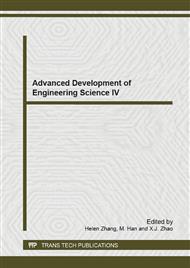p.100
p.104
p.108
p.112
p.116
p.123
p.127
p.131
p.135
Laser Stimulation Control System Design of the Auditory Nerve
Abstract:
Optical stimulation of the inner ear, the cochlea, has been proved as a possible alternative to conventional cochlear implant with the hypothetical improvement of dynamic range and frequency resolution. Moreover, the laser has good directionality character and optical signal between adjacent fibers do not readily interfere. Therefore, cochlear implant based on optical stimulation is promising for further exploration and development. The design of an experimental system for optical stimulation of the cochlea is introduced in this paper. For the important part, the selection of NIR laser and the optical signal control methods were discussed. The pulsed laser light was coupled by fiber or fiber array and radiated to the cochlea. For each channel laser pulse, the width modulation was varied from 10us to 1ms, the pulse repetition rate from 5 Hz to 10 KHz, single pulse energy from 0 to 3.6mJ. The application of high precision DAC made the resolution of the pulse energy regulation up to 1uJ/div. The experiment results show that this design and implementation can meet the requirements on further optical stimulation of the cochlea research.
Info:
Periodical:
Pages:
116-120
Citation:
Online since:
October 2014
Authors:
Keywords:
Price:
Сopyright:
© 2014 Trans Tech Publications Ltd. All Rights Reserved
Share:
Citation:


